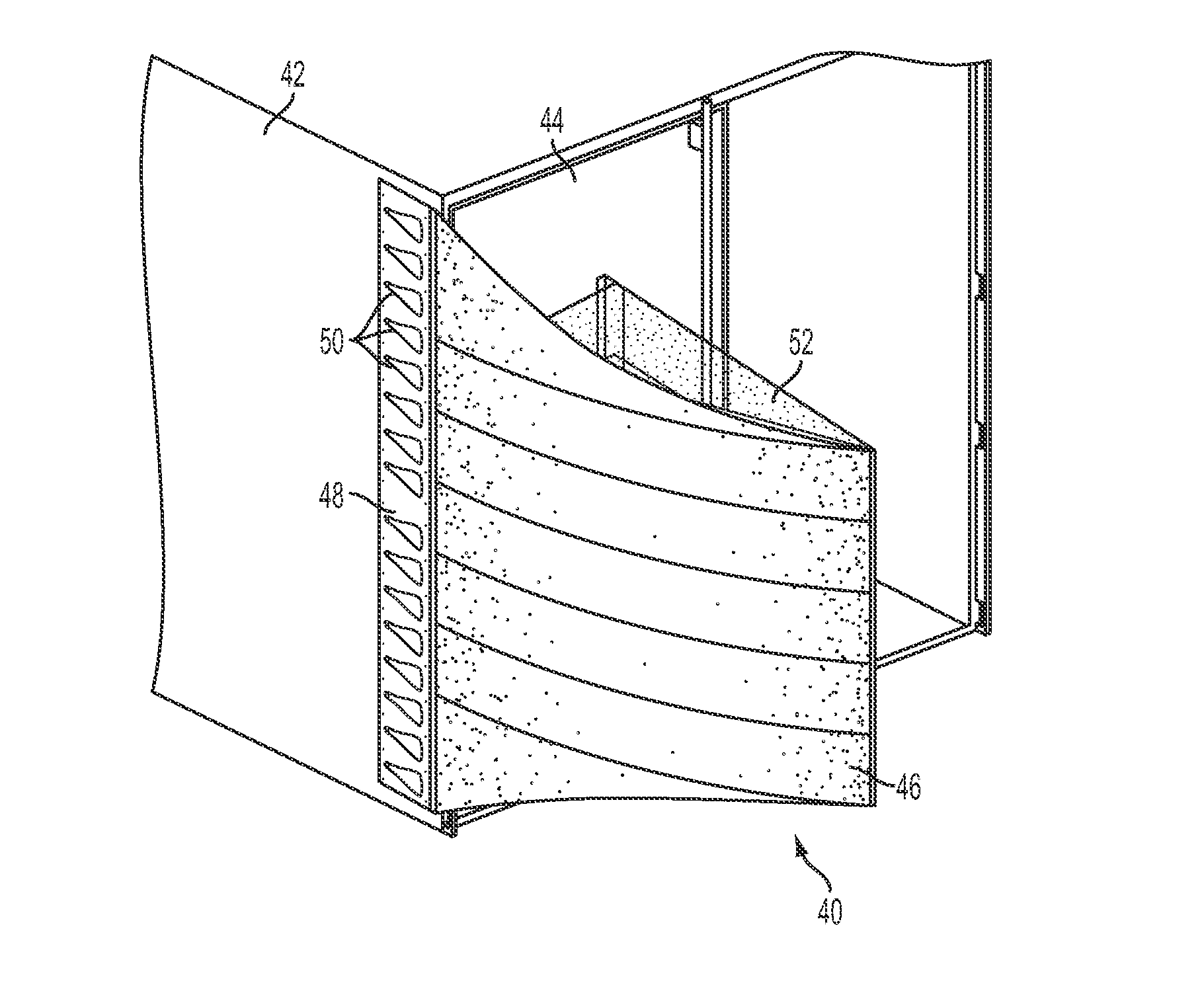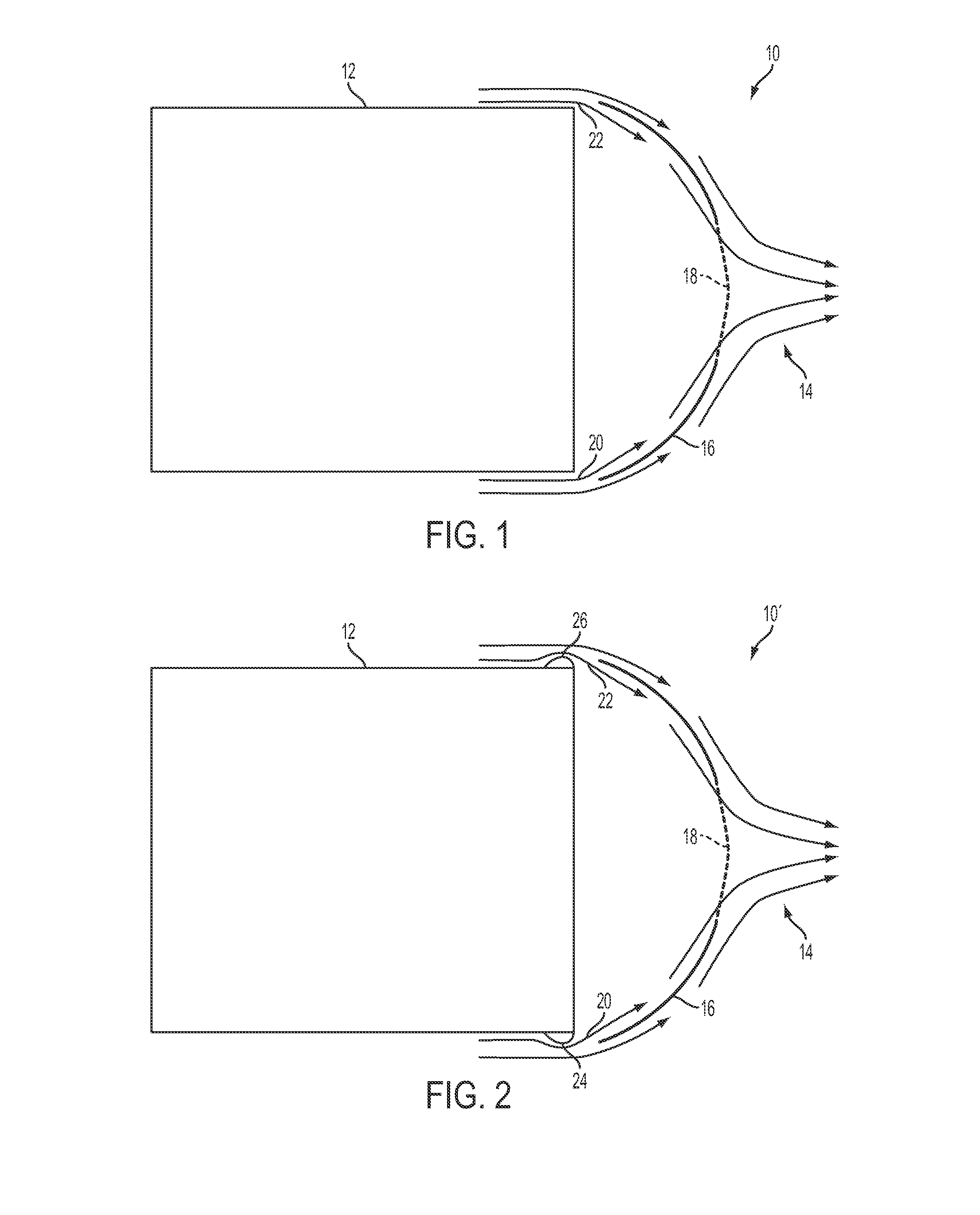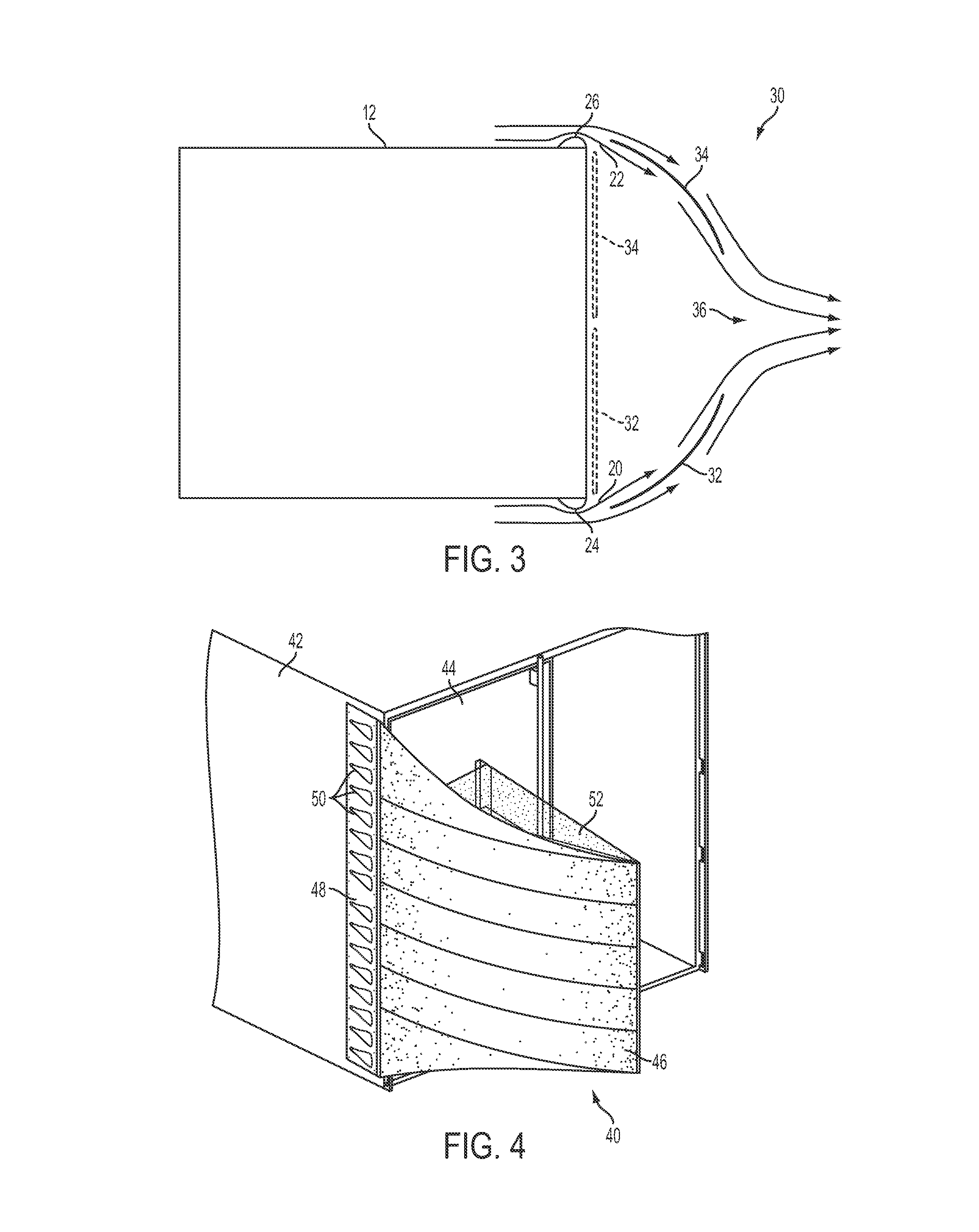Vehicle drag reduction assembly
a technology for reducing aerodynamic drag and vehicle bodies, applied in vehicle arrangements, roofs, transportation and packaging, etc., can solve the problems of increasing shipping costs, reducing fuel economy, and affecting the safety of passengers,
- Summary
- Abstract
- Description
- Claims
- Application Information
AI Technical Summary
Benefits of technology
Problems solved by technology
Method used
Image
Examples
Embodiment Construction
[0051]It is to be understood by one of ordinary skill in the art that the present discussion is a description of exemplary embodiments only, and is not intended as limiting the broader aspects of the present invention, which broader aspects are embodied in the exemplary constructions.
[0052]By way of additional background, those skilled in the art are aware that any solid object in relative motion to the surrounding fluid environment will experience forces applied by that fluid. The forces exerted by the fluid comprise viscous friction of the fluid in laminar flow combined with mass effects of turbulent flow. In most cases of severe aerodynamic drag, the primary adverse force is from the turbulent effects. Thus, altering the shape of an object to promote laminar flow, and retard or prevent the boundary separation to turbulent flow, will reduce the adverse forces, especially in a gaseous environment.
[0053]It is well known that adding a device to the boxy shape of a semi-trailer can sm...
PUM
 Login to View More
Login to View More Abstract
Description
Claims
Application Information
 Login to View More
Login to View More - R&D
- Intellectual Property
- Life Sciences
- Materials
- Tech Scout
- Unparalleled Data Quality
- Higher Quality Content
- 60% Fewer Hallucinations
Browse by: Latest US Patents, China's latest patents, Technical Efficacy Thesaurus, Application Domain, Technology Topic, Popular Technical Reports.
© 2025 PatSnap. All rights reserved.Legal|Privacy policy|Modern Slavery Act Transparency Statement|Sitemap|About US| Contact US: help@patsnap.com



